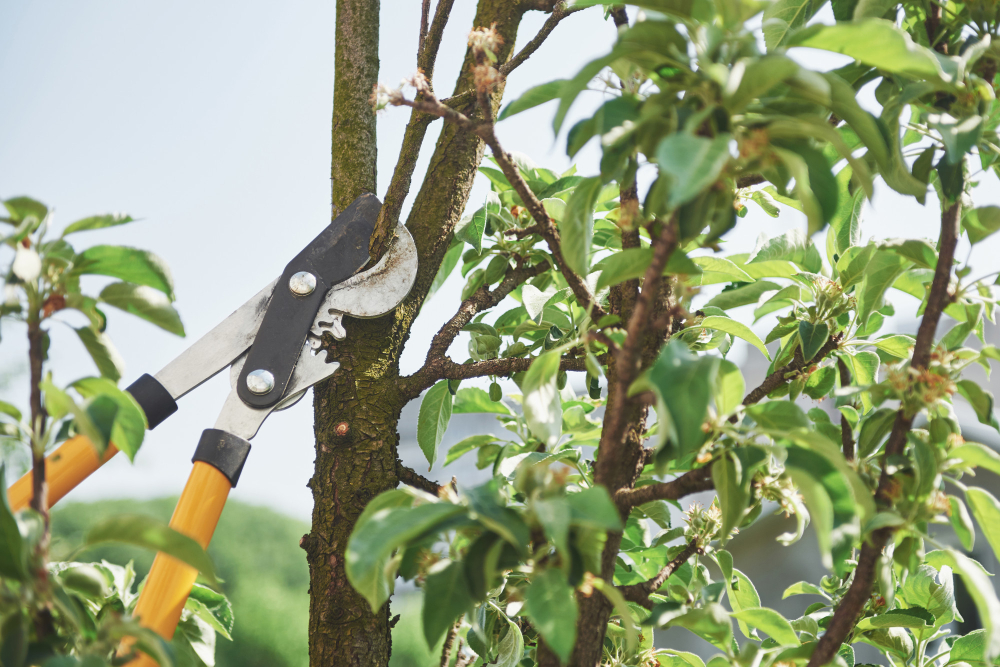It’s easy to overlook the dead branches hanging in your trees, especially if they seem harmless or are tucked out of sight. But deadwood removal is one of those quiet essentials that makes a big difference to your garden’s overall health and safety, and while a few brittle branches might not look like a major problem, they can actually signal deeper issues within the tree or become dangerous if left untreated.
Deadwood is typically the result of age, disease, storm damage or lack of light and once a branch dies, it no longer supports the tree’s systems and instead, it starts to decay. If ignored this can invite insects, fungal infections or even cause the tree to become unstable. Regularly removing this dead material keeps trees structurally sound and gives them the best chance to thrive season after season.
Improves Tree Health and Growth
Dead branches are no longer contributing to the life of the tree and in fact they start to drain the tree’s energy and open it up to disease. When a tree carries deadwood, it becomes more vulnerable to decay organisms and pests that use the dry wood as an easy entry point. Removing those branches helps the tree focus its energy on healthy growth, developing new shoots, strengthening limbs and improving foliage coverage.
Additionally, by removing dead or crowded branches it allows sunlight to reach more areas of the tree and the plants around it. Whilst, the improved airflow also means less moisture is trapped in the canopy, which reduces the risk of fungal infections. Over time, the result is a much more balanced, resilient, and vibrant tree.
Reduces Safety Hazards
One of the biggest risks of ignoring deadwood is safety and that’s because they can snap off without warning, especially during windy weather or storms. A falling limb might land on a car, fence, roof or even worse, someone walking underneath. This becomes even more of a concern when the deadwood is located high in the canopy or over high traffic areas.
By regularly inspecting your trees and removing deadwood, you minimise the chance of property damage or injury. It’s not always obvious which branches are at risk of falling, which is why professional assessment can be helpful. Deadwood doesn’t always come crashing down on a sunny day, but when it does fall, the consequences can be expensive or dangerous. Preventative maintenance is a safer and far more affordable option in the long run.

It Enhances the Look of Your Garden
Aside from the practical benefits, there’s a real aesthetic payoff to deadwood removal. Dead or dying branches make a tree look scruffy, uneven and even uncared for. Pruning them back gives your trees a cleaner shape and creates a more appealing garden overall. Whether you’re trying to increase kerb appeal, maintain a manicured outdoor space or just want your garden to look healthier, a simple clean up can go a long way.
Without a doubt, well maintained trees are an asset to any home. They show that the garden has been cared for, which appeals to future buyers and makes the property feel more inviting.
Supports Long Term Tree Longevity
Think of deadwood removal like a regular health check-up for your trees. By dealing with problems early and keeping up with maintenance, you give your trees a better chance at a long, healthy life. Trees that are pruned correctly tend to live longer and stand up better to storms, pests, and other environmental stressors. That might mean a quick check after a storm, or a more thorough assessment every couple of years, depending on the species and its growing conditions. A small amount of effort now can prevent much bigger issues down the line.
Need a Hand?
If you’re not sure where to start or you’ve noticed dead branches that are too high to reach safely, that’s where the team at North Brisbane Trees comes in. Our qualified arborists can assess your trees, carry out precise deadwood removal, and make sure everything is done safely and with care. With expert help, your trees can continue to be a strong, beautiful part of your outdoor space for years to come.
